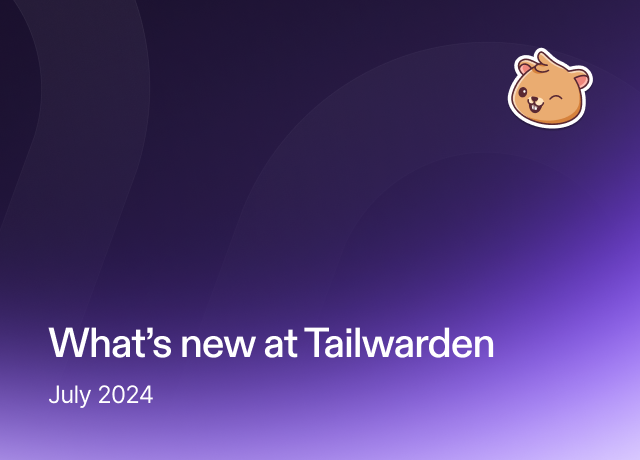
Manage your OCI resources with Komiser
Discover the power of OCI and manage your cloud resources efficiently! Find out where to save money while unlocking the full potential of your cloud infrastructure.

In today's digital world, cloud computing has become an essential tool for businesses of all sizes. Cloud computing allows organizations to access a wide range of computing resources, including storage, networking, security, and databases, without the need for on-premises infrastructure.
One cloud provider that has gained a lot of attention in recent years is Oracle Cloud Infrastructure (OCI). OCI is a powerful cloud computing platform that offers a wide range of services to help businesses modernize their IT infrastructure and improve their operations.
Why Oracle Cloud Infrastructure (OCI)?
Oracle Cloud Infrastructure is a cloud computing platform that offers a range of services, including compute, storage, networking, security, and database services. OCI is built on a high-performance architecture that is designed to support modern workloads, including big data analytics, artificial intelligence, and machine learning.
OCI is a reliable, scalable, and secure cloud solution that offers a range of benefits to users. These benefits include:
High Performance
OCI offers high-performance computing resources, including fast network connectivity, low-latency storage, and high-speed compute instances. This makes it ideal for running resource-intensive applications that require fast processing and high bandwidth.
Security
OCI is built with advanced security features to protect against cyber threats and attacks. The platform provides multiple layers of security, including network isolation, encryption, and identity and access management. This ensures that your data and applications are always protected, even in the event of a security breach.
Scalability
OCI offers flexible and scalable infrastructure that can grow and evolve with your business needs. You can quickly scale up or down your resources to meet changing demand, without worrying about hardware limitations. This makes OCI an ideal cloud solution for businesses that need to rapidly scale their operations.
Cost-Effective
OCI offers a pay-as-you-go pricing model, which means you only pay for what you use. This can help you save money on infrastructure costs, without compromising on performance or reliability. Additionally, OCI offers a range of pricing options, including monthly and annual subscriptions, so you can choose the pricing model that best suits your business needs.
Hybrid Cloud
OCI allows you to seamlessly integrate with on-premises infrastructure or other cloud providers, enabling you to build a hybrid cloud environment that meets your specific business needs. This makes it easy to manage your entire IT infrastructure from a single location, regardless of where your resources are located.
As with any cloud provider, it can be easy to lose track of spending, and as your team grows, so does your cloud bill. Fortunately, Komiser has now integrated with OCI, giving you a clear view into your cloud infrastructure. With Komiser, you can easily track, organize, and set alerts for your cloud infrastructure activity, making it much easier to manage and be a responsible cloud custodian. To learn how to set up the integration, follow the steps below.
Configuration
Use an OCI user and an API key for authentication. In this case, you’ll need to put your tenancy OCID, user OCID, region name, the path to an API key, and the fingerprint of the API key.
The easiest way is to let OCI walk you through the setup process by executing the following command using the OCI cli:
Download OCI CLI, find instructions here
Now, a config file and key pair have been created in your local .oci folder:

Since Komiser looks for credentials in a file called credentials. Create a credentials file in the .oci folder and copy the contents of the config file to it.
Contents of credentials file

Add it to the config.toml file like this:

Make sure to update the path to ensure that Komiser has access the credentials file.
Resource inventory view
This is the view of the OCI resources in the Komiser dashboard which has been saved in the OCI Resources custom view.

Supported resources
At the time of writing (Komiser v3.0.5) the supported resources for OCI are:
- Compute instances
- Developer Service applications and functions
- IAM policies
- Oracle Autonomous Database
- Block storage and buckets
If you're an open source contributor looking to contribute to the Komiser project, there are two ways to do so. First, you can open individual issues requesting support for OCI resources that you'd like to see added to Komiser. These issues can be added to the project by visiting this page.
Alternatively, you can add new resources yourself by using the already supported resources as a template. To get started, take a look at the IAM policy integration example.
For more detailed guidance on contributing to Komiser, check out this guide.
Regardless if you are a Developer, DevOps, or Cloud engineer. Dealing with the cloud can be tough at times, especially on your own. If you are using Tailwarden or Komiser and want to share your thoughts doubts and insights with other cloud practitioners feel free to join our Tailwarden discord server. Where you will find tips, community calls, and much more.



